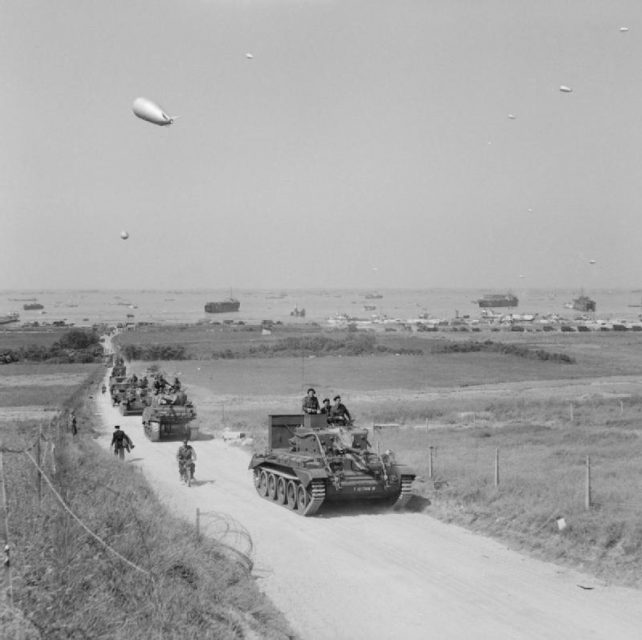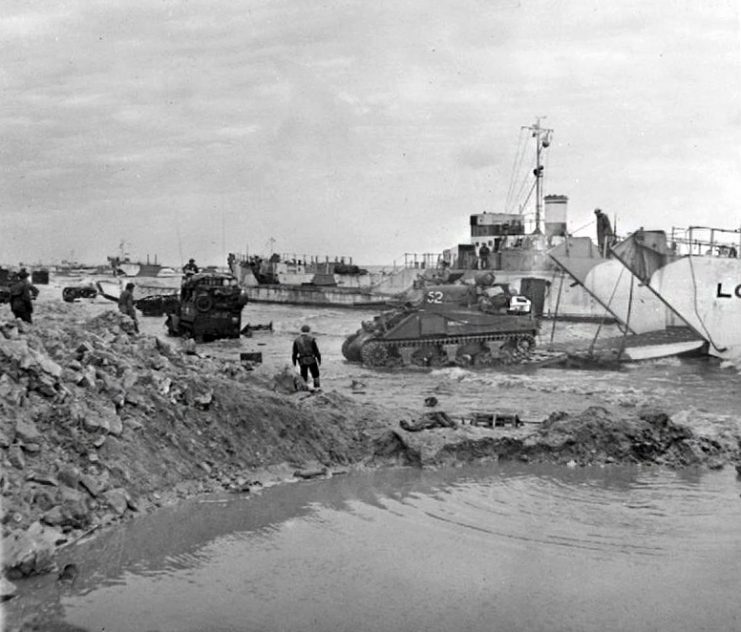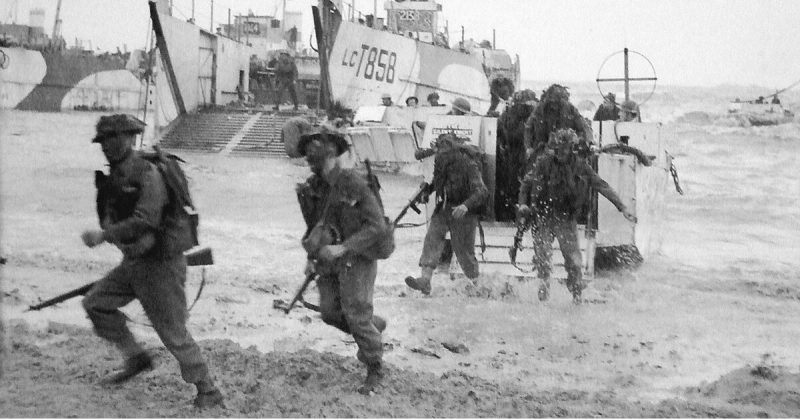More than seventy years after World War II, a dossier of reconnaissance pictures and intelligence documents used to prepare for the D-Day invasion on Gold Beach was auctioned in March of 2016. The documents were once purchased from a flea market in France. The Frenchman who purchased them at the market placed them for sale in an auction. They were valued at £250.
Another batch of documents was sold in the same auction. This batch was owned by a private collector who obtained them from the families of British servicemen. This lot was valued at £800.
C&T Auctions, based in Ashford, Kent, managed the sales.
In the preparation leading up to the invasion, the Allies created 125,000 maps of the Normandy beaches and surrounding region. It was this level of preparedness that won the battle for the Allies. The items sold in the auction are representative of that level of detail. In one of the photos, an RAF pilot flew low enough that you can see German soldiers running for safety, fearing that the British plane is equipped with guns, not a camera.
The lots also included high-resolution pictures of intended targets to be attacked on D-Day. The photos are taken from the height they would be seen from a ship and include detailed observations about the targets and surrounding defenses.
These pictures were taken by British spy planes as much as a year before the invasions on June 6, 1944. The pilots took pictures over large areas of Normandy and Calais in order to keep the actual landing sites a secret from the Axis command.

Also included in the documents are intelligence reports on the defenses, ammunition and weapons of the German soldiers. They are detailed enough to include the infra-red equipment mounted on the German Panther tanks.
In one document, German mines are displayed with a great emphasis on details of design, appearance and operation. German defenses including radar stations and anti-aircraft guns were photographed in amazing resolution. The ability to work out the logistics of that many people, weapons, tanks, ships and planes in order to successfully repel the Axis forces from the shores of Normandy is certainly one of the greatest undertakings in not just World War II but in the Twentieth Century.
Small booklets titled, “Air Ministry Weekly Intelligence Summary” are among the artifacts for sale. These documents describe the movement of German troops in the area of the invasion.
The Telex reports of the Allied forces contact with their Axis counterparts in the days following the invasion.

According to Tim Harper from C&T Auctions, the documents are but a small amount of the tens of thousands of documents and photographs used to prepare for D-Day. They are useful, though, to get a feel for the staggering depth of attention used to plan the invasions that ultimately led to a successful end to the war for the Allies.
Known by the code name “Operation Overlord,” the D-Day landings were the largest amphibious invasion in history. General Dwight D. Eisenhower was in command of the operation which involved landing 160,000 Allied troops in Normandy to attack German troops and artillery that had amassed in that region.
Originally intended to take place on June 5, 1944, the attack was delayed due to poor weather. Over 13,000 planes and 5,000 ships took place in the landings for the Allies. It is estimated that 10,000 Allied troops were killed, injured or missing in the fighting. Their sacrifice allowed more than 100,000 Allied troops to begin the march to Berlin that helped end the war in Europe.
During the eight hours leading to the invasion, Allied planes dropped 11,000 tons of bombs on German defenses while British and American warships fired their big guns from off the coast. At one point, the ships fired 2,000 tons of shells in only ten minutes.
